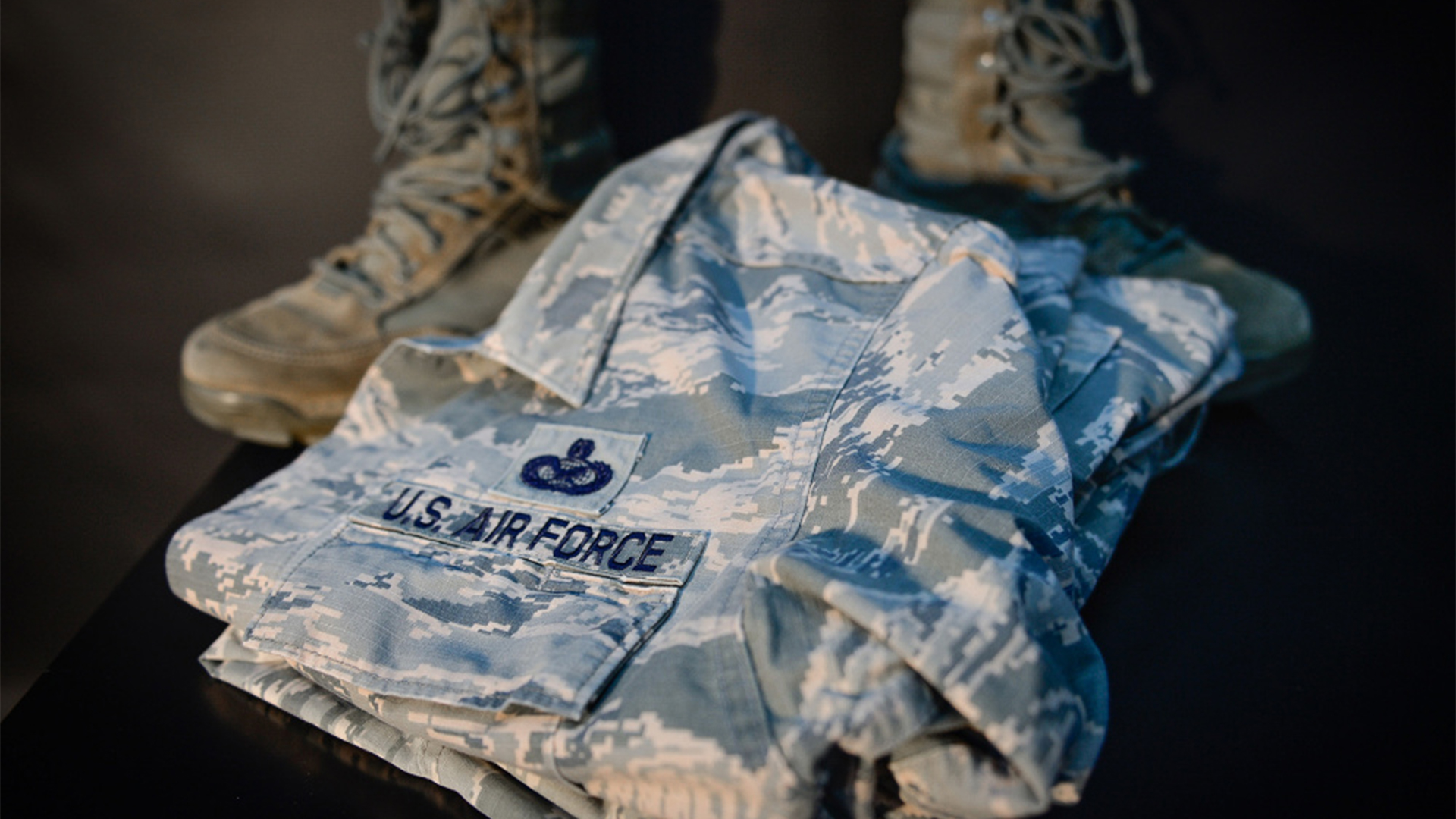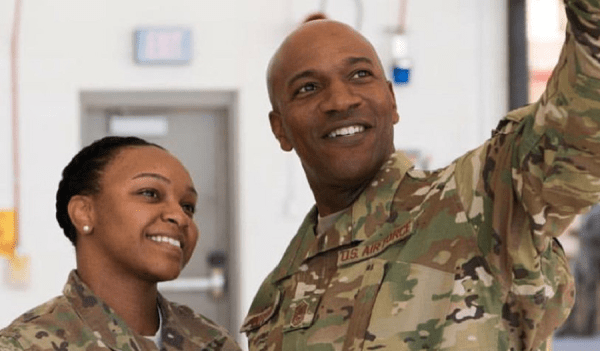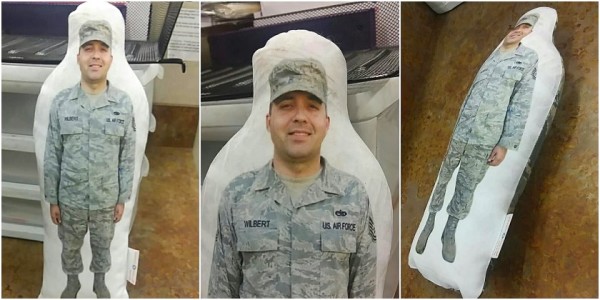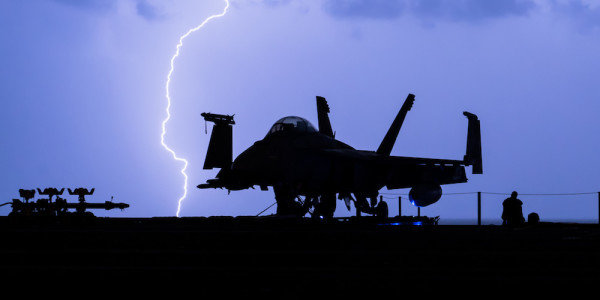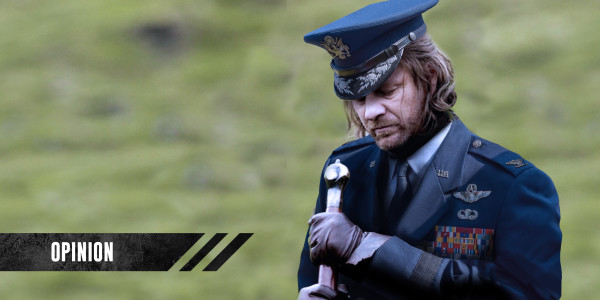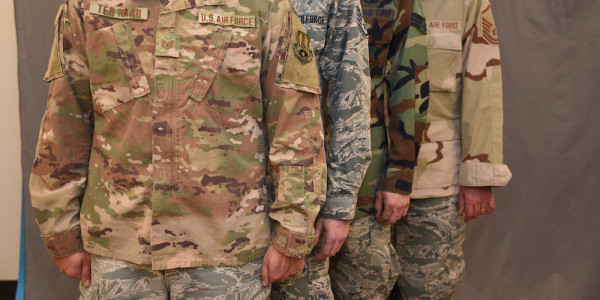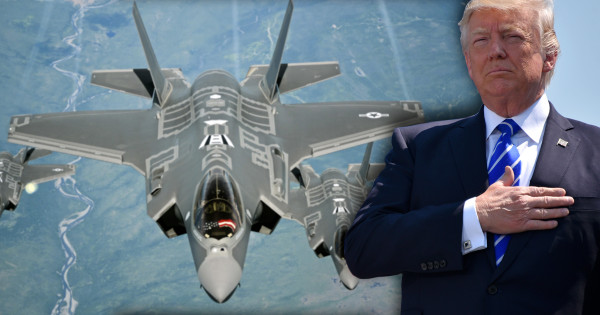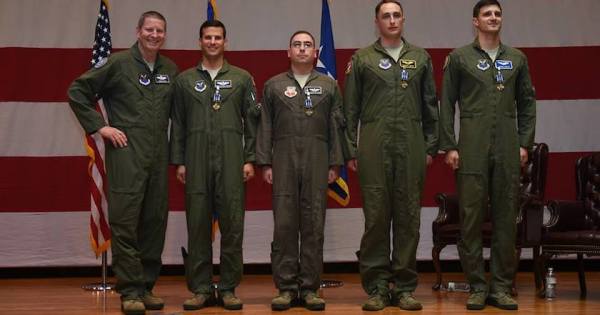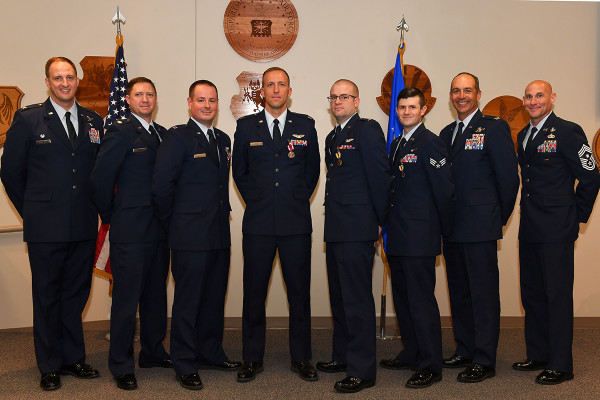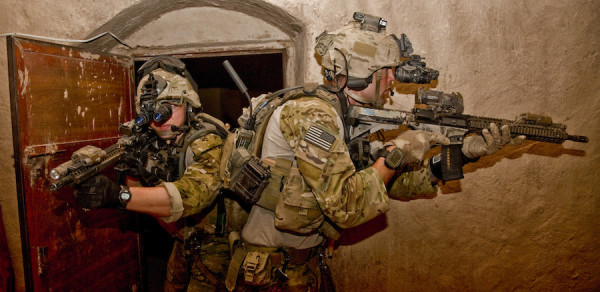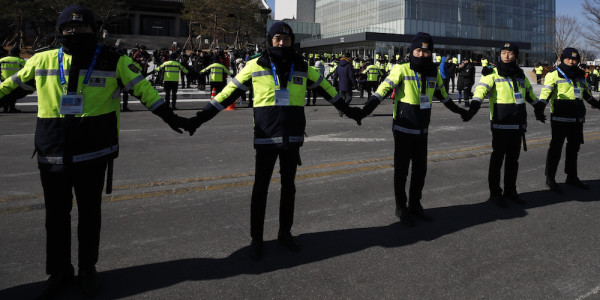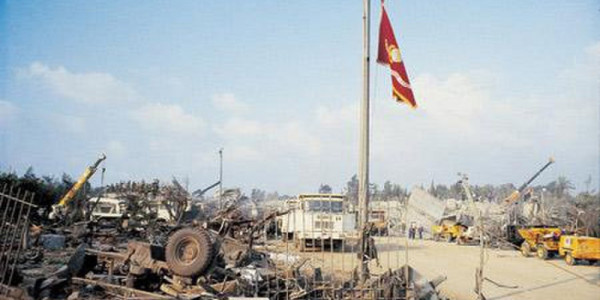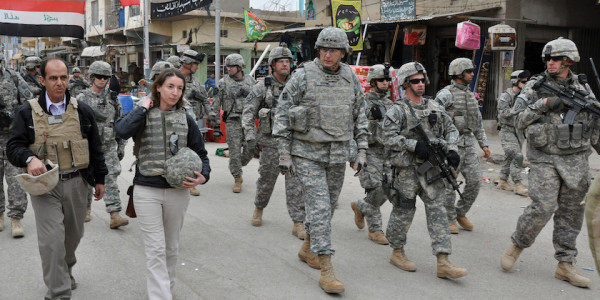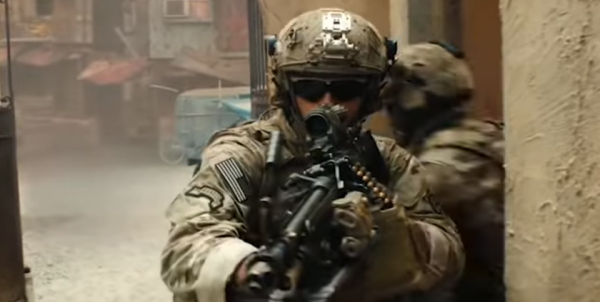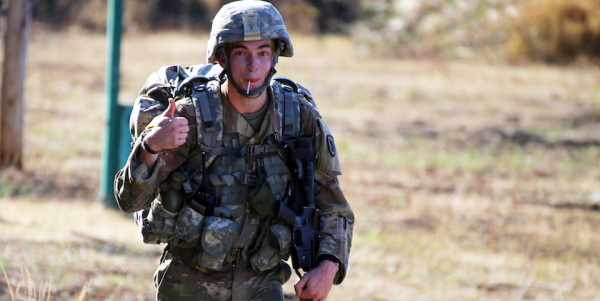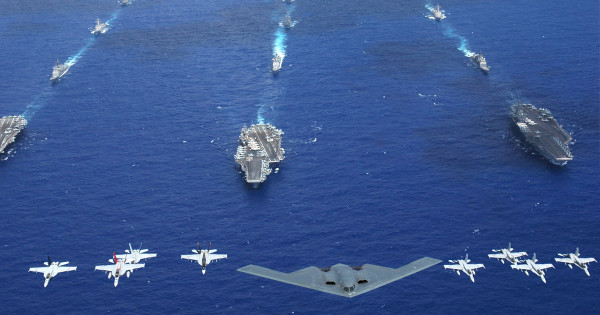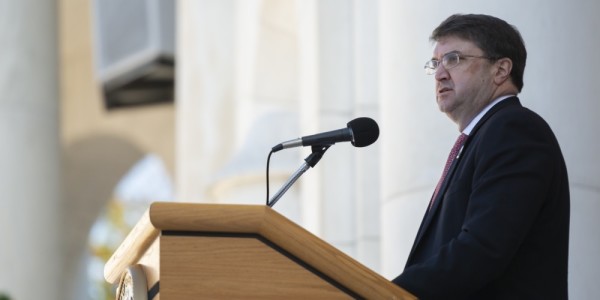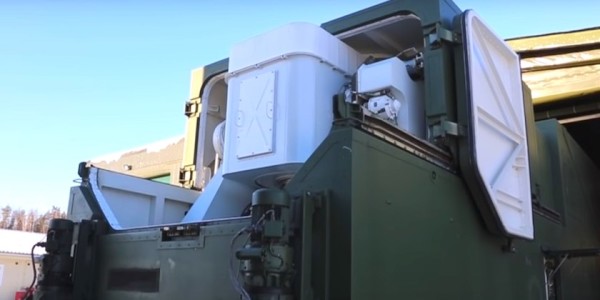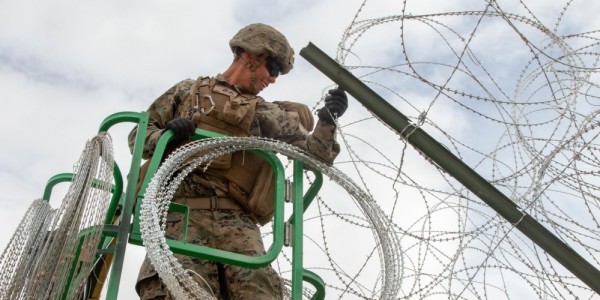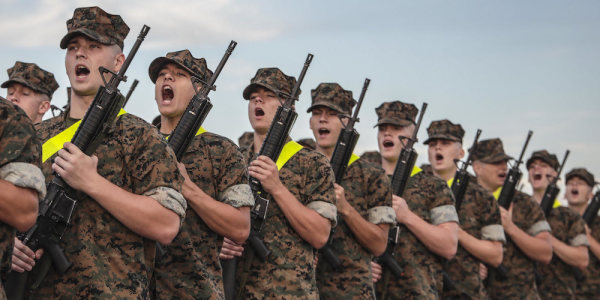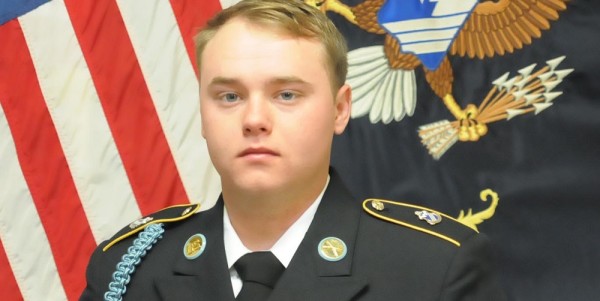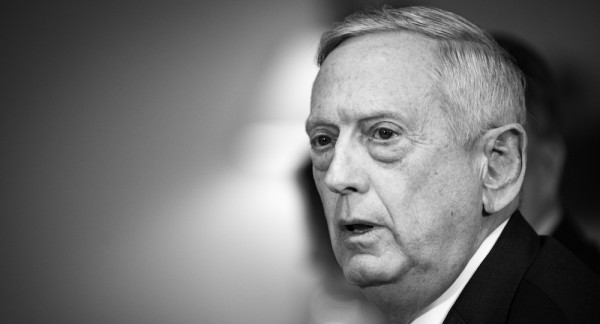In a few short months, the Air Force will say goodbye to one of its stranger fashion choices: the tiger stripe-patterned Airman Battle Uniform (ABU), which was the branch’s official uniform from 2011 (after a four-year phase-in period) to 2018. From its grey-blue stripes to its stiff material and baggy look, there was a lot not to like about the ABUs, and many airmen celebrated their branch’s decision to switch over to the woodsy Operational Camouflage Pattern uniform in 2018.
Still, as the last day of the ABU approaches on March 31, one airman, Master Sgt. Mike Smith of the I.G. Brown Training and Education Center, Tenn., took the time to ask his peers for their memories of the uniform, both good and bad. The results are pretty great:
‘An over-patterned couch‘
“One opponent compared its camouflage design to an over-patterned couch,” Smith wrote in a blog post on Friday. “Another advocate hailed its unique ability to channel the wind down her sleeves, from one arm to the other while driving down the road — she will miss that.”
Windy sleeves aside, airmen had mixed reviews of the ABU’s ability to actually blend into anything.
“ABUs came in handy when I wanted to blend in with concrete,” one airman emailed Smith.
“Turned out, the ABU pattern blended into the mountains extremely well,” said another, about his experience training outside Bagram Airfield in Afghanistan.

Why did the Air Force adopt such a peculiar, concrete-colored pattern? Smith explained that the Air Force wanted “to move past antiquated woodland-pattern camouflage in the Battle Dress Uniform,” he wrote. “We needed new looks to match bold actions to keep moving forward, but it also became a bit of a dance-off.”
Indeed, the U.S. military got a bit lost in the sauce looking for the-next-great-camo. From 2002 to 2011, the armed forces went from two types of camouflage to 10, including several that did not work in Afghanistan (such as the ABU), The Washington Post reported in 2013.
After the Marine Corps developed its own snazzy MARPAT in 2002, the Army tried, and failed, to follow-up with its pixelated grey Universal Camouflage Pattern. Soon all the services were looking to stake out their own unique uniform. But from the beginning, the Air Force’s attempt did not make a lot of sense.
“Only a subset of Air Force personnel fight on the ground, including rescuers of downed pilots and battlefield air controllers,” according to the 2013 report by The Washington Post. “But the branch still spent $3.1 million to come up with its own ground combat uniform. It was a ‘tiger stripe’ pattern, a throwback to camouflage used in the Vietnam War. But it was not well-suited to Afghanistan.”
The uniforms “were not designed to hide anybody. They were designed to look cool,” Timothy O’Neill, a retired Army lieutenant colonel who studied camouflage as a West Point professor, told the Post.
‘As stylish as a fat collar and polyester bell-bottoms’
Even worse, many airmen said wearing the ABUs was an uncomfortable experience.
“The ABU fabric is heavier, thicker, hotter, and stiffer than the [Battle Dress Uniform], and the whole thing is oddly cut,” one airman told Time magazine in 2013. “If your arms are thin and belly is large, the shirt fits great. If the situation is reversed, not so much. All in all, my first impression of the ABU was that I liked it much less than the BDU’s, an opinion my colleagues often echoed.”

On top of that, the grey stripes were never quite the same color.
“We saw different uniform tints, from closet hanger to closet hanger, to formations in the hangar,” Smith wrote in his blog. “‘It sure kept us all guessing the ABU’s true color early on,’ one Airman told me.”
The footwear didn’t do the uniform any favors either.
“[T]here were no doubts that the sage-green boots weren’t hip with a pair of blue jeans and a T-shirt,” Smith wrote. “It looked about as stylish as a fat collar and polyester bell-bottoms. ‘But if they were the only shoes you took TDY, you just owned it, or you stayed in the dorm,’ one Airman told me.”
All these issues meant that when the Air Force announced it was considering switching to the OCP, it heard a chorus of “hell yes!” from airmen.
“We spoke to and listened to airmen on this, and the OCP was the clear choice,” said then-Chief of Staff Gen. David L. Goldfein when he announced the move in 2018.
OCP had a long list of advantages: better camouflage; better fit; more accessible pockets; Velcro for adding nametape, rank and morale patches; and a sense of cohesion that comes from everyone actually wearing the same shade of uniform, compared to the ABUs wild variation in color.
The velcro nametape in particular is an improvement over ABUs, because “you’d lose time searching the coat rack for your hat that someone mistook for theirs,” Smith wrote. “That’s no issue with the new uniform’s hat nametape.”

A handful of cookies
Still, there were some perks to the ABUs, as several airmen told Smith. The large apron pockets were great for stowing “a handful of cookies and a banana to stash on your way out” of the dining facility, Smith wrote.
Plus, the ABUs were a step up from the BDUs in that airmen didn’t have to iron the ABUs or polish their boots. And even though the new OCP ranks can be easily slapped on with velcro, they are not quite as legible as the ABU’s large sleeve ranks, which had to be sewed on.
“We could wear our stripes with prominence,” one airman told Smith. “I need to be right on top of someone to see what rank they are now.”
Smith also found that sewing new stripes onto his ABUs provided a rare chance to “meditate on what the promotion meant and my responsibilities, as well as pay penance from the occasional needle stick,” he wrote.
“Change always has its loss and gain,” Smith added. “History will show that the U.S. Air Force once had a unique utility uniform that, no matter our opinions of it, Airmen wore with absolute pride all over the world. I will truly miss that.”
But sharing the same cloth with the Army and Space Force is still “Dynomite,” he said.
David Roza covers the Air Force and Space Force at Task & Purpose. He can be reached at david.roza@taskandpurpose.com

